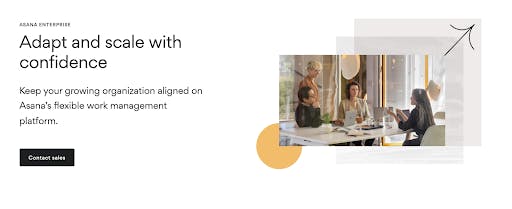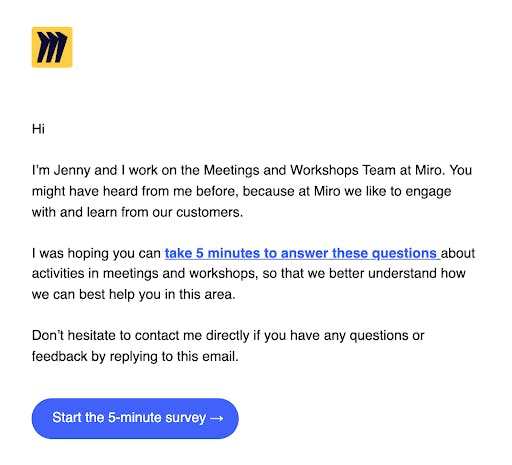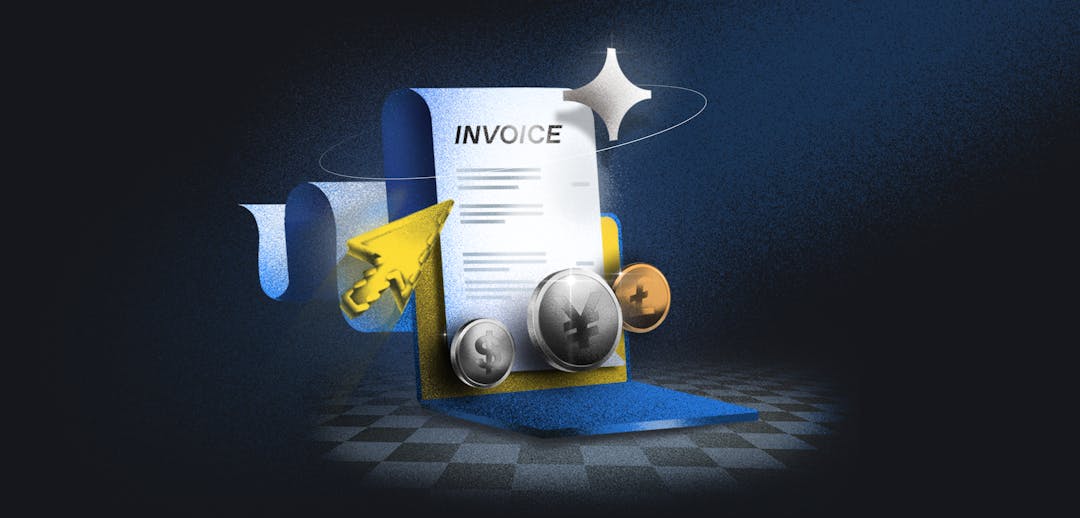Project management software and productivity tooling is a huge, competitive market to be in. And it’s growing and predicted to be worth a whopping $122.7 billion by 2028 .
Until recently, growth by companies in the industry has been achieved mainly by product-led growth (PLG) . That is, by targeting individuals, professionals, and small teams and allowing them to sign-up and purchase access to the product through a self-serve checkout on your website.
But as SaaS adoption continues to increase in the wake of the pandemic, IT and SaaSOps (and finance) teams are getting a little savvier. They’re waking up to the fact that each team signing up to - and paying for - separate sets of tools isn’t efficient – for budgets or collaboration.
As companies look to consolidate the 110 SaaS apps they use on average , 56% now only use one project management software (PMS) .
So, how do you make sure that your tool is the one that survives the cull?
Well, there’s something that helped the Miros and Mondays of the PMS world stand out – and that is hybrid billing.
In this article, we’ll take a look at what hybrid billing is, why it’s the secret sauce for project management software, and how to implement it in your business.
What is hybrid billing?
Hybrid billing refers to a business that uses both self-serve and sales-assisted billing models. In the case of project management software (and the examples we gave above), this includes adding a sales-led growth overlay to existing product-led workflows.
In practice, this means implementing systems, processes, and product features that help you close deals with larger teams and enterprises. This might mean introducing custom pricing, new collaboration features, alternative payment methods, and of course, a sales team to drive and ultimately close these larger deals.
Alongside this sale-assisted approach, your checkout makes sure that individuals and small teams can still access your product.
Why hybrid billing for project management software?
If you’re growing steadily with a product-led growth strategy, why would you invest time and money in a more complex sales model too?
- As we mentioned above, SaaS companies are consolidating their app usage . This means, whether you planned it for your business or not, the industry is being pulled upmarket. If you aren’t ready to serve large teams, you risk getting left behind.
- The ability to sell to large teams and enterprises unlocks a huge Total Addressable Market (TAM) that you would otherwise miss out on. While we can’t promise it will get you a $17.5 billion dollar valuation , enterprise deals also mean more revenue and longer contracts that help your business's financial security.
Let’s take a look at Asana’s journey as they embraced the hybrid model:

Launched in 2012, Asana is now one of the biggest names on the market. And yes, you guessed it, they started out selling to small teams and startups.
Asana for Business arrived in 2018 and brought with it new features, including Portfolios and Workload, to help teams collaborate on projects. Later came Asana Enterprise with further distinguishing features for even larger teams.
Asana was valued at ~$5 billion when it IPO’d in 2020 and its enterprise product offering now has companies like Spotify, PayPal, and Okta using the platform.
Not bad going, is it?
How to implement hybrid billing in your business
As the market gets more complex, your billing and sales processes can be the difference between big-name deals accompanied by a steady stream of sign-ups and losing out to your competitors.
So, here are some key considerations to help you successfully implement hybrid billing in your business.
1. Optimize your self-serve workflows
You don’t want to implement your sales-led overlay at the expense of your self-serve revenue stream. The idea is that the two sales processes work in harmony.
So, the first thing to do is optimize your self-serve payment and billing processes for maximum conversion (and, later, retention).
This includes:
- Engineering a seamless checkout experience.
- Having preferred payment methods and currencies available, wherever your customers are based.
- Implementing subscription logic and recurring billing processes that prevent customer churn.
2. Understand your enterprise audience
You can’t successfully win enterprise deals without understanding this new customer segment.
Think about:
- The types of business you will target.
- Who the decision-makers are in those organizations.
- What pains are they trying to solve? (and whether or not your product can currently solve them).
- How they expect to be billed and then pay for their use of your product.
You can find the answers to these queries by speaking to existing customers and new prospects about what they expect from a solution like yours. Also, check out what your competitors are up to and what their enterprise offering looks like.
Miro, for example, recently sent a survey to find out how they could improve their product for use in business meetings and workshops. This is a great way to find out what functionality people want to see in your product – and what they currently find most valuable.

3. Think global and local
Remember the huge TAM we mentioned above? Well those companies and the employees within them, are based all over the world.
This means that both your product-let and sales-led processes need to be localized to meet the needs of a global customer base. Here are some things to consider to make both your individual users and large teams happy.
- Local currencies and payment methods
- Support and sales communications in local languages (and available in local time zones). This goes for emails relating to subscriptions or payment transactions too.
- Sales tax and local financial compliance: This includes sending compliant invoices or collecting the right information in the checkout.
Check out this factsheet for more information on selling SaaS globally.
4. Identify the upsell opportunities
If you already have customers using your product, check which companies they work for. Better still, look at where you already have more than one user from the same company.
These are likely warmer opportunities and could help you close those enterprise deals more quickly than someone from an organization who doesn’t yet use or know your product.
You can reach out directly to let them know about your enterprise offering – what’s included in the package, why it’s more suitable to businesses and bigger teams, and the impact it could have on their business.
5. Showcase your value (or build it)
The value of using project management software has been proven:
- Project management software saves the average employee 498 hours per year.
- 61% of companies using project management tools completed projects on time, while only 41% of those not using them did. ( Source: saaslist )
Your challenge is to show prospects why they should choose your solution. If you have a great enterprise offering – whether that’s a product feature that puts you ahead of the competition or something else – make sure people know about it.
You could do this through your website, content, or advertising – the point is to tell your story where your prospective customers will see it. Perhaps the most notable example of this is Monday.com, arguably the biggest ad spenders in SaaS just a few years ago. While controversial, and arguably annoying when you were trying to watch a YouTube video, nobody can deny their success.
If your enterprise product still leaves something to be desired, spend time reviewing your roadmap and getting your product ready. You don’t want to close a big deal, only to find the product isn’t suitable and you can’t realize that revenue or keep the customer.
6. Upgrade your payment infrastructure
Enterprise customers will not have different expectations of your product, and the same is true of how they prefer to pay.
Before you target these customers, you need to make sure that your payment infrastructure can support this new way of selling.
- Pricing: Most businesses offer custom pricing for enterprise deals. You’ll need to make sure you can update your pricing and packages accordingly.
- Subscriptions and billing frequency: Enterprises may prefer to be billed annually, rather than monthly. You will also need subscription logic to support your enterprise layer and ensure they receive the right functionality in the product.
- Payment methods: Enterprise businesses pay differently to individuals. While card payments might still be an option, you should also consider other payment methods like direct debit or wire transfer. And importantly, you’ll need to be able to invoice your customers at the time of payment too.
Paddle is the only complete payment infrastructure for software businesses.Book a demo to speak to an expert and find out how we can help you with hybrid billing.





